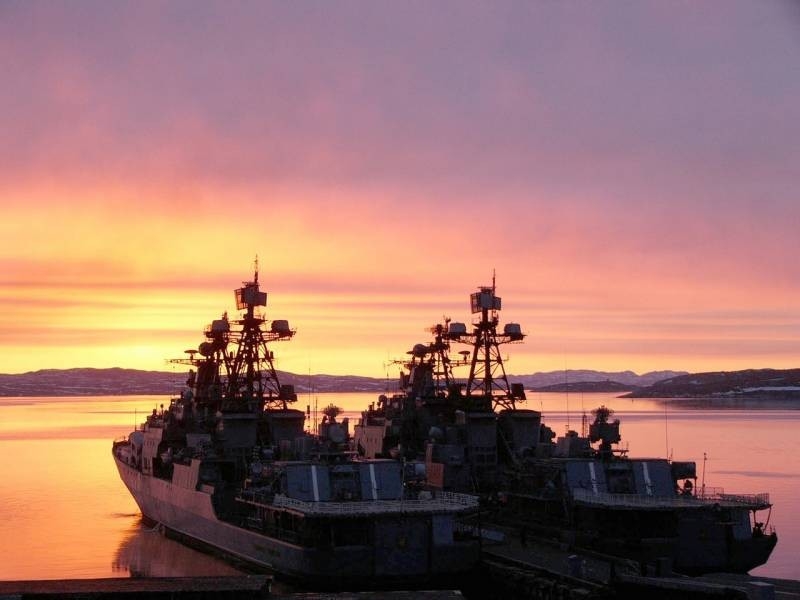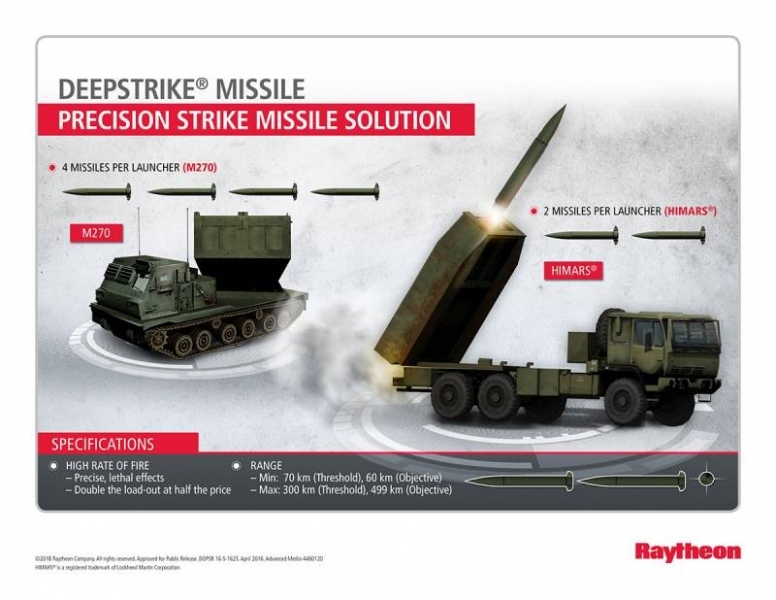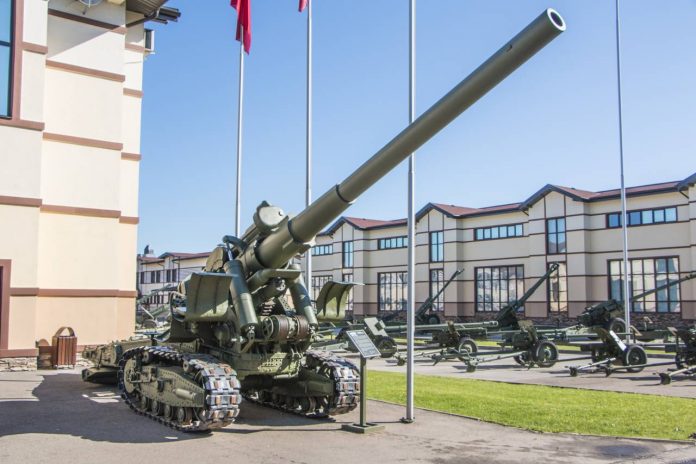Intensification of the acquisition of operational combat readiness by such promising shipborne anti-aircraft and anti-missile defense assets, as Russian and Chinese multi-channel medium / long-range air defense systems "Shtil-1", "Redoubt" and HQ-16, as well as the upcoming re-equipment of surface ships in service with the Russian fleet and equipment of the MRK under construction pr. 22800 and corvettes pr. 20380 Pantsir-M anti-aircraft missile and cannon systems are forcing specialists from the defense departments of Western European states and the United States to increasingly think about a partial departure from the previous concept of using anti-ship weapons in sea and ocean theaters, involving the use of subsonic low-altitude anti-ship missiles with low maneuverability and a huge flight time.

It is for this reason that the Pentagon, along with the allocation of colossal allocations for the development and implementation of the F / A-18-E / F carrier-based fighters in ammunition, of the stealthy ultra-long-range anti-ship missiles AGM-158C LRASM, also bets on the design of not only the standard (ground-to-ground class), but also an anti-ship version of the operational-tactical ballistic missile PrSM («Precision Strike Missile»), also known in Western media under the acronym "Deep Strike" ("Deep Impact"). Colonel John Rafferty announced the start of work on this modification of the PrSM OTBR in an interview with Defense News. 27 Martha 2019 on the eve of the opening of the U.S. Armed Forces Association of Global Military Symposium in Huntsville (PC. Alabama).
It is worth noting, what to create an anti-ship version of "Deep Strike", standard rocket PrSM, originally developed by Raytheon Advanced Missile Systems (sponsored by Lockheed Martin) as part of the ambitious Long-Range Precision Fire program and the upcoming replacement of the aging OTBR MGM-140 / 164B families (ATACMS Block IA/IIA) should get a fundamentally different architecture of the guidance system, ensuring the defeat of not only highly protected stationary objects, but also mobile surface targets (missile boats, frigates, destroyers, etc.) with minimum circular probable deviation. In particular, in addition to the standard strapdown inertial navigation system (BINS) based on solid-state semiconductor gyroscopes and semiconductor accelerometers, as well as the GPS module, the new PrSM variant can be equipped with:
- terminal of a two-way asynchronous data transmission line over a secure radio communication channel (to receive additional target designation from aircraft RLDN of the AWACS system, as well as radars and electronic reconnaissance means of long-range anti-submarine aircraft P-8A "Poseidon" and UAVs MQ-4C "Triton");
- optical-electronic correlation homing head (by analogy with GSN 9E436, developed in the early 2000s. JSC "TsNIIAG" for equipping operational-tactical ballistic missiles "Volga" and adapted for integration into the guidance system of the 9M723-1 "Iskander-M" OTBR) to detect and "capture" enemy surface ships using reference images of silhouettes in TV / IR / low-level TV channels, in case of intense radio interference;
- passive or passive-active radar homing head for "capturing" surface ships as with included, so with turned off radar detectors and multifunctional radar (a similar operating principle is possessed by the passive-active seeker WGU-48 / B anti-radar missiles AGM-88E / G AARGM / -ER).

This infographic from Raytheon Corp. illustrates how Deep Strike tactical ballistic missiles can be integrated into redesigned launcher charging modules. (PZM) M269, placed in armored box trusses of mobile launchers M270 MLRS MLRS and M142 MLRS HIMARS. How view, the diameter of the OTBR in 340-350 mm causes a twofold increase in ammunition in comparison with the ATACMS OTRK

Business Insider reported, a NATO weapons could be used for war with Russia
Much more relevant and partly a preventive step, especially in the face of the daily expansion of the spectrum of threats in theaters of military operations, will assess the ability of the anti-ship modification "Deep Strike" to break through "anti-missile barriers", formed by our shipborne SAM "Shtil-1", Redoubt and Pantsir-M. Despite even the fact, that the promising anti-ship modification "Deep Strike" will have a hull diameter of 0.34-0.35 meters (we made such a conclusion based on the sketch, posted on the portal asc.army.mil), which, together with the widespread use of composite materials, will reduce the effective reflective surface of the product from 0.2-0.3 sq.. m (in ATACMS) up to 0.05-0.1 square meters. m, range of its detection by means of RLO 5P27 "Furke" and MRS "Polyment" (are part of the radar "equipment" of frigates pr. 22350/M) will be from 50 to 70 km, which gives the computational means of the air defense missile system of the order of 30-45 s to detect, "Tie-in trails" and capture "Deep Strike", moving at a speed of 4.5-6M. Fregat-M2EM radar detectors will have a similar bearing range for PrSM missiles., placed on frigates of the "admiral's series" (etc. 11356).
Meanwhile, there is no need to talk about the possibility of intercepting "Deep Strike" by means of the "Shtil-1" air defense system., because the, At first, the terminal section of the descending branch of the trajectory of these ballistic missiles has angles of the order of 75-85 degrees, which noticeably exceed the elevation angles of the beams of the Fregat-M2E radars and the MR-90 Orekh illumination stations (no more 60 degrees). Secondly, standard anti-aircraft guided missiles 9М317, equipped with semi-active radar seeker 9E420, unable to continue intercepting a ballistic target after it leaves the field of view / illumination of the MR-90 Orekh stations, while the final information on the adoption of the improved missiles 9М317МА with active RGSN 9B-1103М into service with the Russian Navy is absent (in summer 2017 of the year in the Russian media there was information about the "slipping" of the tests of this missile defense system from the frigate "Admiral Makarov").
Thirdly, the ability of "Deep Strike" to perform high-intensity anti-aircraft maneuvers with overloads of more than 25-30 units. partially counteracts the maneuverability of the 9M317 SAM family (including "MA") even taking into account the presence of the last gas-jet system deviation of the thrust vector. This is especially clearly seen after the burnout of the solid-fuel gas generator in these anti-aircraft missiles., when the OBT system ceases to perform its main function. As a result, even the Shtil-1 complex, even equipped with the upgraded 9M317MA interceptor missiles, has a chance to intercept the maneuvering Deep Strike only at the stage of operation of the dual-mode solid propellant rocket engine of the anti-aircraft missile. Conclusion: the only Russian shipborne air defense missile systems, capable of withstanding the anti-ship modification of the OTBR PrSM («Deep Strike»), are KZRK "Redut" and the shipborne anti-aircraft missile-gun complex "Pantsir-M".
"Redoubt" will be able to destroy "Deep Strikes" due to the unique maneuverability of the 9M96DM anti-aircraft missiles, provided by the presence of gas-dynamic engines of transverse control, as well as through the use of active radar guidance, fully compensating for the presence of a "dead funnel" above the carrier ship (cone-shaped airspace, "Not visible" by radars of detection and guidance of the ship's air defense system). "Pantsir-M / Palitsa" is also capable of handling "Deep Strike" approaching at a vertical angle due to the most important design advantage - the elevation viewing area of an autonomous optical post (optoelectronic module) from -5 to +82 degrees; but the likelihood of defeat will be noticeably lower, not in "Reduta", since the 57E6 SAM does not have additional gas-dynamic control systems and has an overload limit of only 32G.
The complexity of the whole situation is, that at the moment a full-fledged version of the Redut air defense system (as part of the Sigma-22350 combat information and control system with the attached Poliment radar and the 5P27 Furke detector) possesses only the frigate pr. 22350 "Admiral Gorshkov", while the project corvettes 20380/85 have a "stripped-down" modification of "Polyment", receiving target designation from the "Furke-2" surveillance radar with a lower energy potential and worse noise immunity. Operating in the most missile-hazardous south-western strategic direction, the surface component of the Black Sea Fleet of the Russian Navy does not include a single combat ship with Redoubt on board..
Information sources:
http://rbase.new-factoria.ru/missile/wobb/atacms/atacms.shtml
http://rbase.new-factoria.ru/missile/wobb/mlrs/mlrs.shtml
http://forum.militaryparitet.com/viewtopic.php?id=24101
http://militaryrussia.ru/blog/topic-450.html
http://militaryrussia.ru/blog/topic-270.html/topic-611.html
Eugene Damantsev










